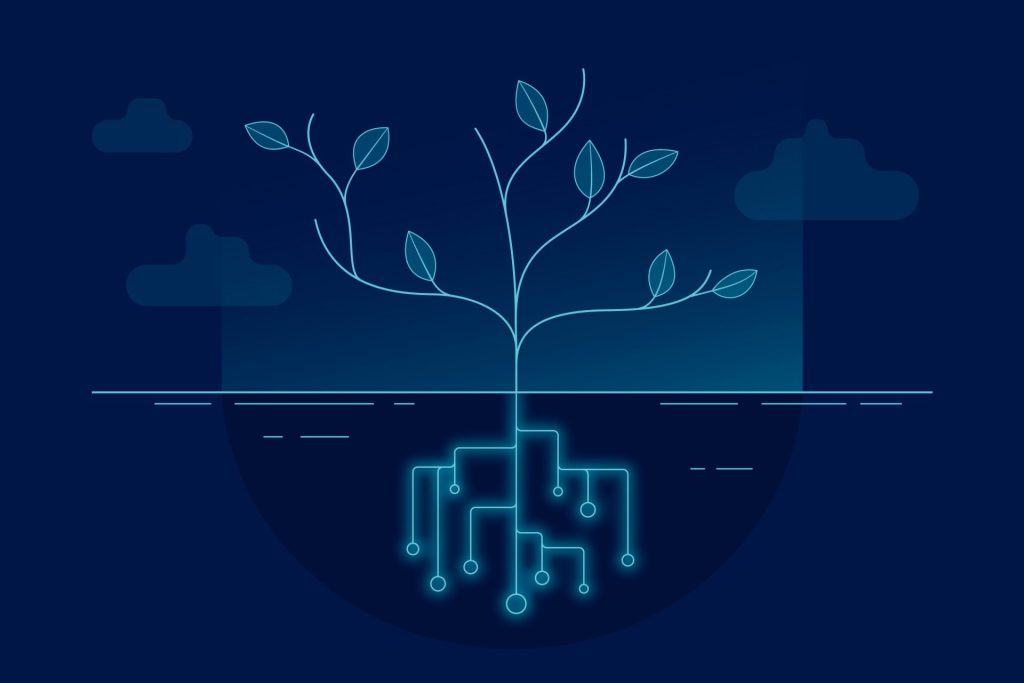
What Is a Merkle Tree?
If you’ve ever wondered how blockchains verify data without needing to store or check every transaction, the answer lies in something called a Merkle tree. It’s not flashy or hyped, but it’s one of the reasons Bitcoin, Ethereum, and other blockchains can stay efficient, secure, and tamper-proof.
Whether you’re into crypto, building Web3 apps, or just trying to understand how these systems work, understanding Merkle trees is a must.
Why Merkle trees matter in blockchain
Blockchains depend on three things to function properly: data integrity, fast verification, and storage efficiency. Merkle trees offer all three. They allow nodes to verify whether a specific transaction exists in a block without downloading the entire dataset. They make it easy to detect even the smallest changes to any part of the data. And they allow lightweight wallets to function securely without being full nodes.
Bitcoin uses them. Ethereum uses a more advanced version of them. And the idea itself has been around since the 1970s.
What exactly is a Merkle tree
A Merkle tree is a data structure that organizes data in a way that makes it easy to verify, track, and summarize. It works by taking individual pieces of data like transactions, hashing each one, and then grouping those hashes together into pairs. These pairs are hashed again, and this process repeats until you’re left with a single hash at the top of the tree. That final hash is called the Merkle root.
The Merkle root represents all the transactions beneath it. If you change even one transaction, the root changes too. This is what makes tampering so easy to detect in blockchain systems.
How a Merkle tree works in practice
Say you have four transactions: T1, T2, T3, and T4. Each one gets hashed, creating H1, H2, H3, and H4. Then you pair them like this:
H1 and H2 get hashed together to form H12
H3 and H4 get hashed together to form H34
H12 and H34 are hashed together to form the Merkle root
Now you have one single hash that represents all four transactions. If someone tries to change T2, the hash H2 will be different, which means H12 will be different, which means the final Merkle root will also be different. That’s how blockchains spot inconsistencies almost instantly.
Why blockchains rely on Merkle trees
Merkle trees make blockchain systems efficient and secure in several ways
They allow verification without full data
You don’t need the entire blockchain to confirm your transaction. A few hashes are enough to prove it’s part of a block
They preserve data integrity
If any data is changed, the hash at the top changes. This makes tampering obvious
They support light clients
Wallets that don’t store the entire blockchain can still verify transactions securely using Merkle proofs
They save space
Instead of saving every single transaction, you can store or transmit just the root and a few hashes
How the Merkle root fits into each block
In most blockchains, the Merkle root is stored in the block header. This is what gets hashed during mining, and it links one block to the next. If someone tries to change one transaction, the Merkle root will change. That alters the block’s hash, which breaks the connection to the next block. This breakage immediately exposes tampering and keeps the chain secure.
What is a Merkle proof
A Merkle proof is a minimal path of hashes that proves a specific piece of data is included in a Merkle tree. Instead of sending the full block, you send just enough hashes to rebuild the Merkle root and confirm that the transaction was there.
This is what powers simplified payment verification, also called SPV. Lightweight wallets use SPV to confirm that a transaction was included in a valid block without storing the entire blockchain.
Merkle trees beyond crypto
This concept isn’t unique to blockchain. Merkle trees are used in many areas of computing
In Git they help track file changes and commit history
In IPFS they verify file chunks across distributed nodes
In distributed databases they make syncing faster and more secure
In cloud storage systems they help detect tampering or data loss
Limitations of Merkle trees and what’s next
Merkle trees are powerful, but not perfect. Their structure is binary and rigid, which isn’t always the most space-efficient. Very large trees can become computationally heavy to update or verify.
Ethereum uses a modified structure called the Merkle Patricia Tree, which handles key-value data and supports Ethereum’s state management. Looking forward, Ethereum developers are exploring something called Verkle trees. These use a different kind of cryptographic proof that could reduce data sizes and make syncing nodes faster, which is especially useful for scaling the network.
Merkle trees might seem abstract at first, but they solve a very real problem. They help blockchains stay decentralized, efficient, and secure. They let you verify a transaction without trusting anyone. And they’re one of the main reasons a decentralized system like Bitcoin can function at all.
Understanding Merkle trees is like understanding the roots of the system. You don’t see them every day, but they’re holding everything up.